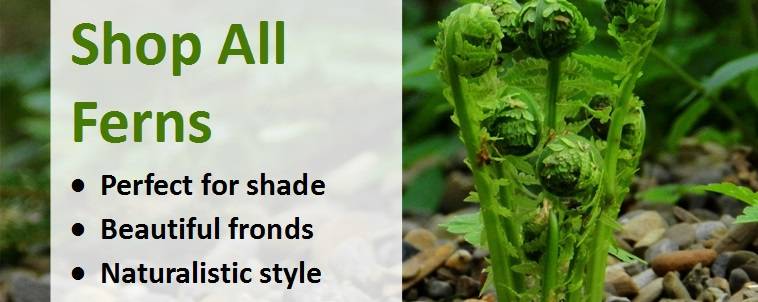Check Here Before Buying – Pot Size Matters...Not all websites offer the same. Plants in a 2-litre pot have twice the root system of a P9 or 1 litre pot.
How to plant, grow and care for Ferns
Ferns are highly versatile, ancient plants with mysterious, intricate leaf forms creating a naturalistic, informal appearance. Watching their tightly rolled fiddleheads gradually unfurl into magnificent fronds is quite a delight and their architectural foliage is great for adding movement to the garden. Ferns were very popular in Victoria times, then fell out of favour until the resurgence of the majestic tree fern Dicksonia Antarctica brought them back to our attention. Available in a variety of different colours, shapes and sizes, they're low maintenance, pest and disease free and long-lived.
This article covers growing ferns in the open ground. Other articles that may be of interest include:
- How and where to use ferns in your garden
- How to grow ferns in a container
- How to plant and grow a tree fern
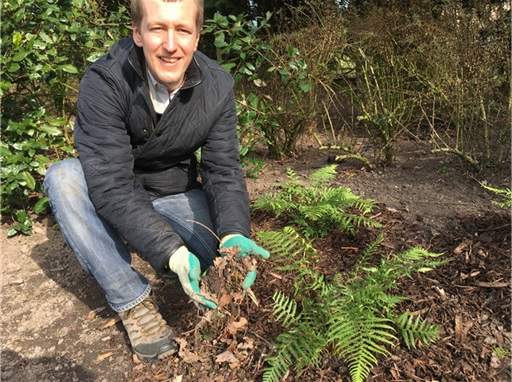
Choosing a Fern for your garden
- It's worth considering the space you have available and what you're looking to achieve by planting a fern. They come in a wide variety of shapes and growth habits, from the tiny Dryopteris Cristata which reaches no more than 30cm (12 inches) to the stately tree fern Dicksonia Antarctica which can grow up to 8 metres (26 feet).
- There are evergreen ferns that keep their foliage all winter and replace old fronds with fresh new ones in the spring, whilst others are deciduous, dying back completely following the winter cold before bursting into life again in the spring.
- Choose evergreen ferns for winter interest and adding solid form and structure to the border. Deciduous ferns can be used for seasonal effect, especially when the young fronds unfurl in the spring, often in shades of bright crisp green or red.
- Tree ferns often look good as a stand-alone centre-piece, perhaps with other shade-loving plants underneath, but bear in mind the trunk will only grow 2.5cm (1 inch) per year, so choose one of a size to fit your planting scheme if you want an instead impact.
- Other ferns look best when planted in groups. Using odd numbers of each variety helps maintain their natural appearance.
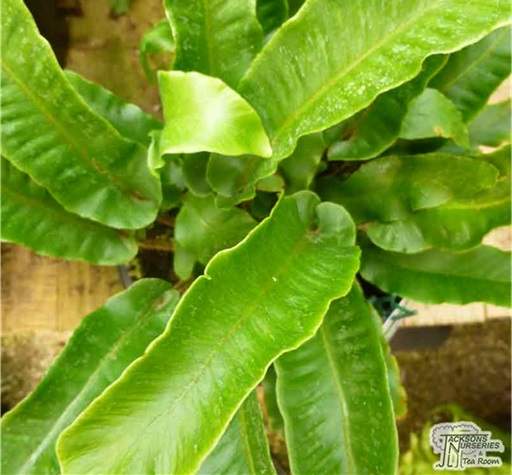
Where to Plant
- Aspect. Ferns are shade-loving plants. Evergreen varieties will thrive in partial sun or dappled shade whilst deciduous ferns tend to have softer, more delicate fronds and are best suited to a more shaded spot. They're renowned for thriving in heavy shade where little else will survive.
- Soil. Most ferns are easy to grow and will succeed in any evenly moist yet well drained, neutral to alkaline soil. The exception is royal fern, Osmunda Regalis, which prefers a neutral to acid soil.
- Moisture. Deciduous ferns that die right back to the ground in winter generally like wetter, more open conditions, whilst evergreen ferns prefer somewhere a little drier. Some varieties such as Osmunda Regalis make great marginal plants around a pond or stream.
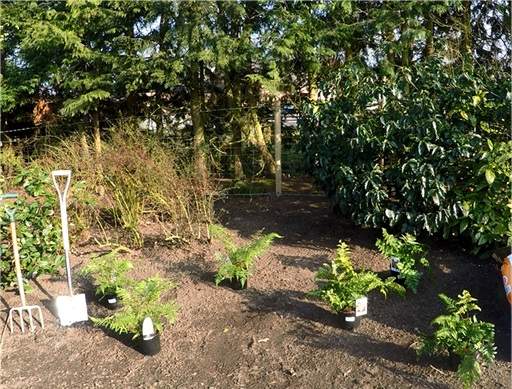
When to Plant
- Containerised ferns can be planted at any time of the year providing the ground is not frozen or waterlogged and it's not excessively windy.
- The best time to plant is spring or early autumn. Autumn works well in drier areas so the roots can quietly establish below ground over winter and spring, making your plant better able to tolerate hot, dry weather when summer comes around again the following year.
How to Plant
1) Dig the planting hole
- Check the eventual spread of your ferns before planting. We normally recommend planting them at a distance of at least the same as the eventual spread.
- There's no reason why you can't go closer if you want a more instant impact, although it will mean things may get a bit congested as your plants fill out over time.
- Dig the planting hole twice as wide as the fern's container and to the same depth.
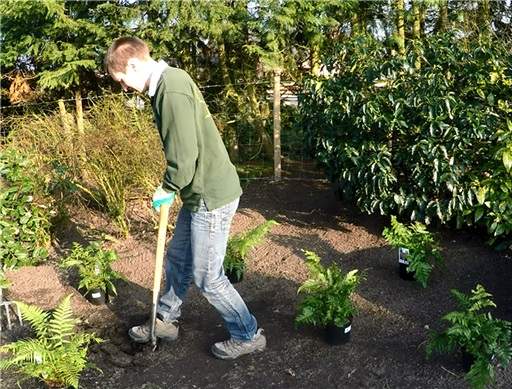
2) Preparing the planting hole
- Use a fork to break up any compaction of the soil at the bottom and around your planting hole.
- This is important particularly in heavy soils where the clay is prone is smearing- you'll want to break up the shiny layer so the roots can penetrate the ground around it with ease.
- If you're planting in a light soil, gently firm the ground at the base of your planting hole to avoid your plant sinking deeper in the planting hole than you wanted it to later on.
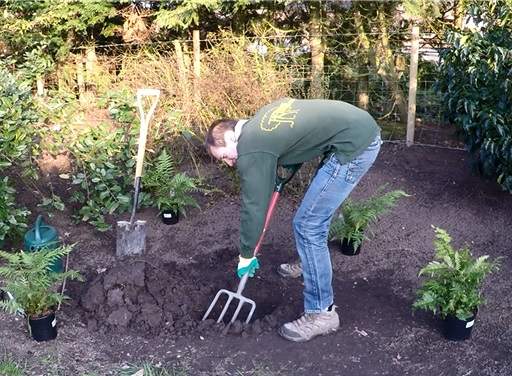
3) Tease out the roots from the root ball
- If you're planting a containerised fern, trim any roots that may be growing out of the drainage holes and tease out any roots circling around the container.
- This will encourage the roots to move out from the circular shape they adopted in the pot once planting out.
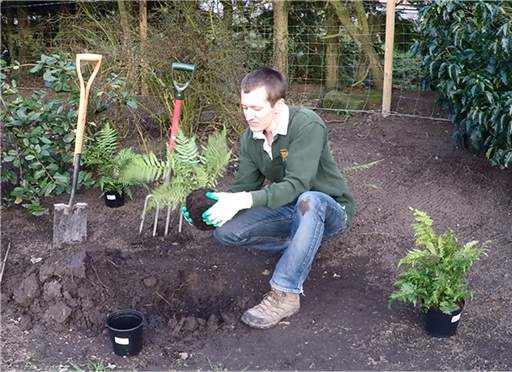
4) Check the planting depth
- Plant your fern at the same level as it was in the pot. Using a bamboo cane to check the planting depth may help. Avoid planting too deeply, particularly for crown-forming ferns.
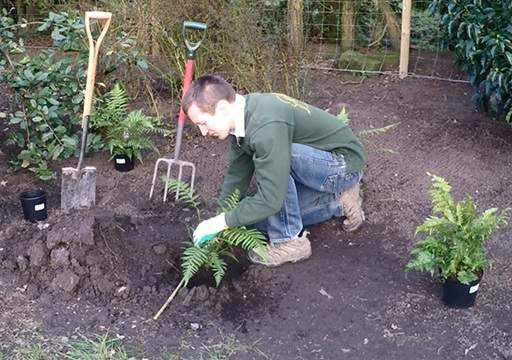
5) Backfill, digging in organic matter
- Dig in plenty of organic matter such as well-rotted garden compost or leafmould when planting, to aid moisture retention and provide nutrients to help your new plant become established.
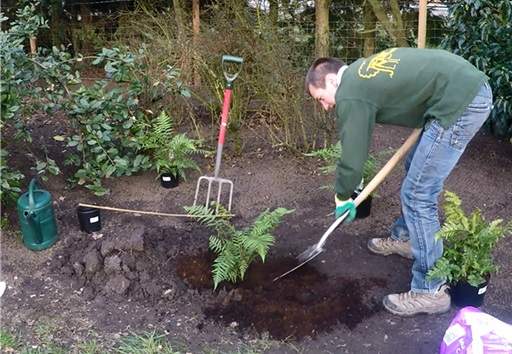
6) Firming down
- Firm down the soil with your toe pointing towards the fern so you're not pushing it down, just firming the soil around it. Cover the ground where you've firmed in.
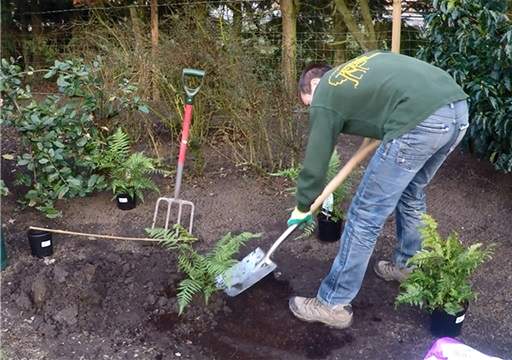
7) Water
- Water well once planting is complete.
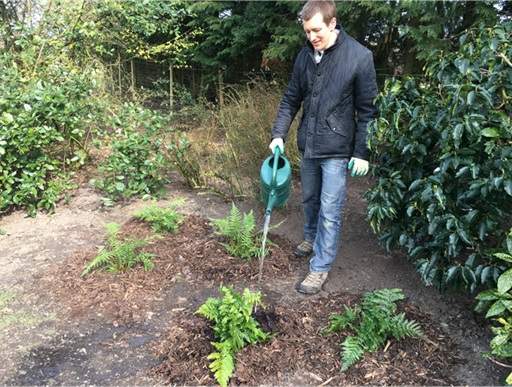
8) Mulch
- Mulch with bark chippings to suppress weed growth, preserve moisture and keep the soil cool.
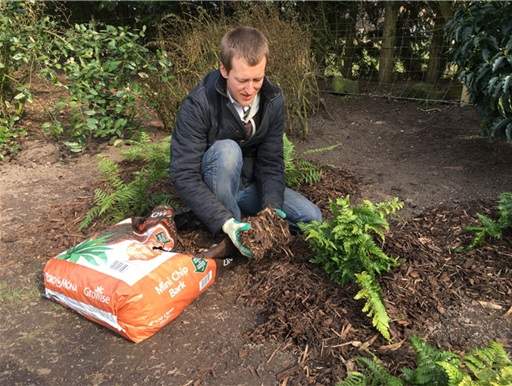
Garden Care
Watering
- Water ferns during prolonged periods of dry weather to prevent the soil getting completely dry.
- Apply water directly to the roots, not onto the fronds or crown, to prevent the foliage rotting.
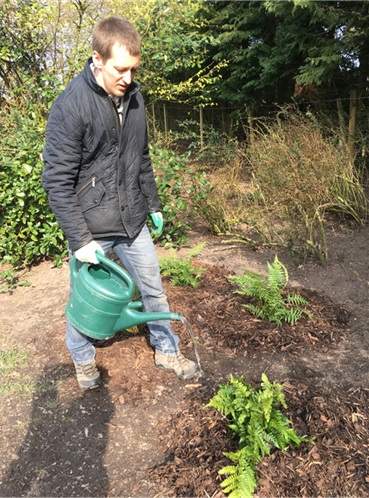
Mulching
- Apply a 5cm (2 inch) thick mulch of well rotted garden compost, leaves or pine needles each spring to keep the weeds at bay, boost the nutrients in your soil and retain moisture.
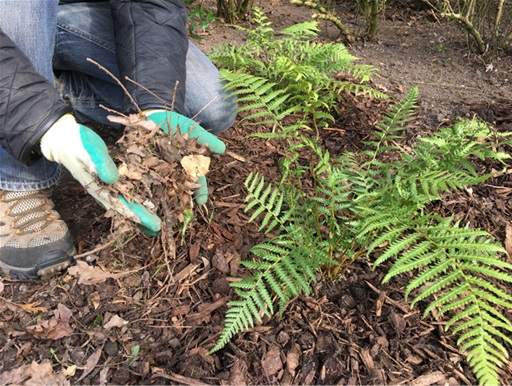
Feeding
- Feeding is not normally essential but if you want to give your ferns an extra boost, apply a slow release fertiliser sparingly in the spring, just as new growth has begun.
- If you have a particular poor soil, applying some fish, blood and bone in spring works well.
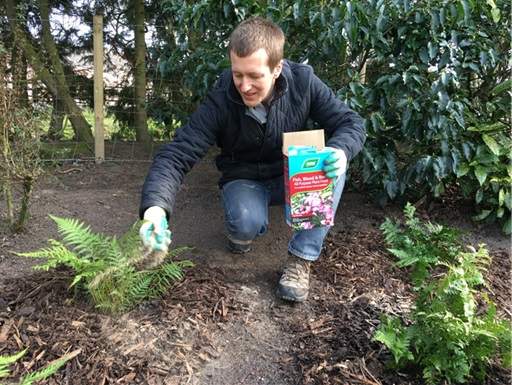
Pruning
- Pruning is very straight forward - simply cut away old, dead fronds using secateurs in late winter or early spring before the uncurling of new ones begins.
- This is more of a tidy-up exercise than a necessity because, if not undertaken, the old fronds will simply fall to the ground and biodegrade naturally.
- After pruning, remove any debris from in/around your ferns to encourage good air circulation.
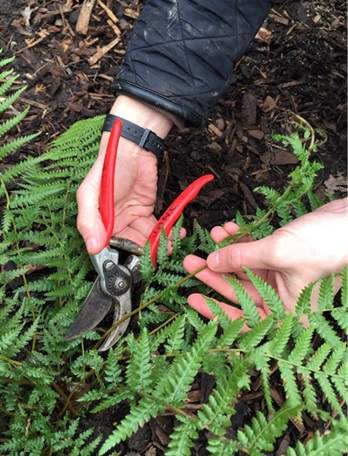
Lifting and Dividing
- When the fronds of your ferns start to appear smaller sparser, it's likely the underground rootstock has gone bare in the centre, so it's time to lift and divide
- Some ferns grow as mats of fibrous roots, whilst others form crowns underground. The best course of action is to dig the whole clump, remove any dead, damaged or rotting sections then take square pieces of 15cm by 15cm (6' by 6') from the most vigorous growth and replant them.
- This is best done in early spring, as soon as new growth starts to appear. Make sure you water well after planting as newly planted clumps prefer an evenly moist soil.
Frost Protection
- Winter protection of half-hardy tree ferns is vital to prevent fronds being lost to the frost.
- Place a generous layer of straw atop and around the crown, carefully tying up the fronds, then wrap both the tied fronds and trunk with several layers of garden fleece.
- A popular alternative in colder gardens is to lift your ferns or plant them in pots to allow them to be moved to an outbuilding, conservatory or greenhouse during the winter.
- Winter protection of other ferns is not required except during the harshest of frosts. Deciduous varieties will naturally die back after hard frosts but will re-grow again from the rootstock in the spring. You may wish to cover with hay or straw to prevent winter heaving.
Pests and Diseases
- Ferns are rarely troubled by pests and diseases. Just keep a look out for the occasional slug attack in the autumn, best addressed with broken egg shells or slug killer pellets.
Share this page:



